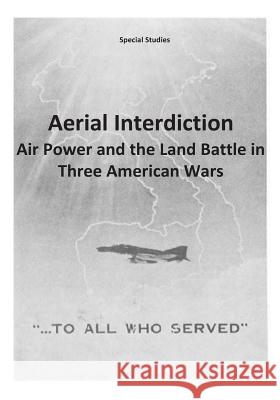Aerial Interdiction: Air Power and the Land Battle in Three American Wars » książka
Aerial Interdiction: Air Power and the Land Battle in Three American Wars
ISBN-13: 9781507724309 / Angielski / Miękka / 2015 / 446 str.
This analytical work by Dr. Eduard Mark of the Center for Air Force History examines the practice of air interdiction in three wars: World War II, the Korean war, and the war in Southeast Asia. It considers eleven important interdiction campaigns, all of them American or Anglo-American, for only the United States and Great Britain had the resources to conduct interdiction campaigns on a large scale in World War II. Dr. Mark proposes what he considers to be a realistic objective for interdiction: preventing men, equipment, and supplies from reaching the combat area when the enemy needs them and in the quantity he requires. As Mark notes, there has been little intensive scholarship on the subject of interdiction especially when contrasted with the work done on strategic bombardment. In the wake of the Persian Gulf war, the reader will no doubt be impressed by the comparatively low performance of weapons in these pre-Gulf war campaigns. DESERT STORM showed that recent advances in technology had enabled interdiction to reach new levels of effectiveness, especially in night operations. Yet, as the reader soon discovers, interdiction in the pre-Gulf campaigns sometimes profoundly influenced military operations. As is often the case in military history, the effects were often serendipitous-not as planned or anticipated, but present nevertheless. By the middle of the Second World War, aircraft were already demonstrating that they could have a devastating impact upon a military force's ability to wage war. Field Marshal Erwin Rommel, for example, complained bitterly during the North African and Normandy campaigns about air power that, in his memorable words, "pinned my army to the ground" and otherwise denied his forces both supplies and the ability to freely maneuver.
Zawartość książki może nie spełniać oczekiwań – reklamacje nie obejmują treści, która mogła nie być redakcyjnie ani merytorycznie opracowana.











